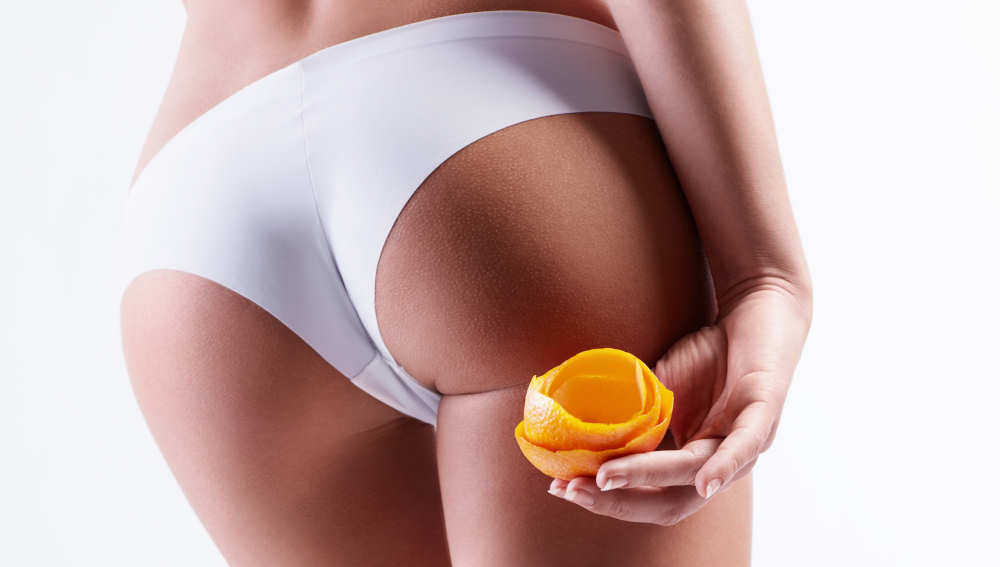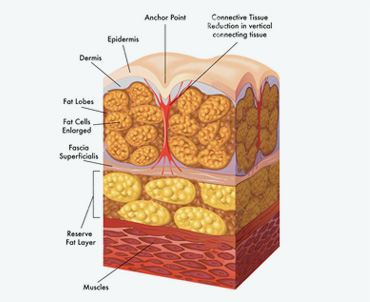
Carboxytherapy
by Cellulite Institute editorial staff

Carboxytherapy
Carboxytherapy is a non-surgical technique used in aesthetic medicine.
The technique consists in the administration of gaseous carbon dioxide from a machine with tiny needles acting both subcutaneously and intradermally.
The functions of carboxytherapy include increasing blood flow in the treated area and increasing collagen formation in the skin, giving it a more youthful appearance. Thanks to the Bohr effect, carboxytherapy affects the metabolism of lipids, thus burning fat.
What can be treated?
- Cellulite: Edematous fibrosclerotic panniculopathy, CO2 acts on the microcirculation and adipocytes.
- Localised adiposity:
Direct action, due to the trauma caused by flows of CO2 on adipocytes
Indirect action, through the increase in oxidative processes due to the increased bioavailability of oxygen
CO2 can be used before liposculpture to:
- improve the final result
- reduce post-operation recovery time
Carboxytherapy: functions for cellulite
Cellulite affects almost all women, generally occurring on the thighs and buttocks.
There are many reasons that determine the predisposition of many women to cellulite, while men are less susceptible.
Women have more fat than men, and the layer of subcutaneous fat in women is regulated by the hormones and does not respond to diet and physical exercise.
The female hormone oestrogen increases fat storage. Thus, women are genetically predisposed to storing fat. Fat functions as an energy reserve, especially during pregnancy.
Carboxytherapy did not originate as an aesthetic treatment, but as a treatment for:
- vascular diseases
- hypertension
- heart diseases
The use of carboxytherapy in aesthetics gives rise to conflicting opinions, raising the question of whether the scientific evidence and studies performed to demonstrate the effectiveness of carboxytherapy in the treatment of cellulite and scar tissue are sufficient.
Those who practise this treatment guarantee that the results are immediately visible, but without long-term studies on the effectiveness of the method there can be no certainty, and so many doctors remain cautious.
If you want to reduce the appearance of scars, circles under the eyes, cellulite and stretch marks, but you do not want to undergo surgery, you may want consider carboxytherapy.
As the name suggests, carboxytherapy is a treatment that works thanks to the infilitration of carbon dioxide. Your doctor will need to determine if there are any contraindications to the treatment.
How does carboxytherapy work if it has no contraindications?
According to advocates of this treatment, the action of carbon dioxide stimulates the circulation and increases collagen production, resulting in improved skin appearance. Aging can reduce blood circulation, which means less oxygen to the cells. Consequently, without contraindications, the process of creating new cells slows down or even stops.
By injecting carbon dioxide, the body requires a greater amount of oxygen with a consequent increase in blood flow and optimal recovery of cell growth.
The contraindications should be known.
If there are no contraindications, doctors expert in aesthetics who use this method recommend it for:
- Removing stretch marks
- Cellulite
- Dark circles under the eyes
- Scars
When carboxytherapy has no contraindications it can be used to treat many parts of the body, including:
- Face
- Lower eyelids, dark circles under the eyes
- Neck
- Arms
- Belly
- Legs
- Buttocks
The main contraindications are:
- Angina
- Apnea during sleep
- High blood pressure
- Pressure failure
- Bacterial skin infections in the acute phase
- Viral infections/local inflammation
- Gangrene
- Congenital heart disease
- Chemotherapy and cancer
- Dialysis
- Epilepsy
- Phlebitis or pulmonary embolism
- Severe anaemia, haemorrhagic diseases
- Haemophilia
- Severe heart failure
- Patients with immunosupression or using immunosuppressive drugs
- Chronic obstructive pulmonary disease
- Diabetes mellitus
- Recent heart attack
- Kidney failure
- Pregnant and breastfeeding women
- Use of acetazolamide and diclofenamide
- Congestive heart failure
- Severe cerebrovascular diseases
- Aortic stenosis
- CO2 retention
- Acute thrombosis
Only the doctor can determine if you are fit to undergo treatment.
Carboxytherapy: side effects
The side effects that the therapy can cause are minimal and are resolved spontaneously in a short time.
The most common side effects include:
- minimal discomfort during the injection
- mild local pain
- if you do not maintain a healthy lifestyle, the cellulite returns so the results obtained may be lost.
- heat or tingling for a short period of time at the injection site
- sensation of pressure in the treated area, caused by the diffusion of carbon dioxide at that site
- Pain: any pain is fairly slow to be felt
- Bruises: 30% of patients complain of bruising and ecchymosis. These disappear in 4 or 5 days.
- Oedema, swelling: oedema is frequent. It normally disappears in a couple of days.
- Erythema, redness: this may also occur and lasts a few days. Carboxytherapy leads to vasodilatation and therefore erythema with reddening of the area is inevitable.
- A tingling sensation. This normally lasts no more than a couple of hours.
- Sensation of heavy legs: due to vasodilatation. This does not last for more than a couple of hours.
If you experience any unusual side effects after the treatment, you should consult your doctor.
It will in any case be the doctor who will establish, based on the medical history of each individual, whether that individual is fit for treatment, that the carboxytherapy has no contraindications and therefore that treatment sessions can be performed safely.



